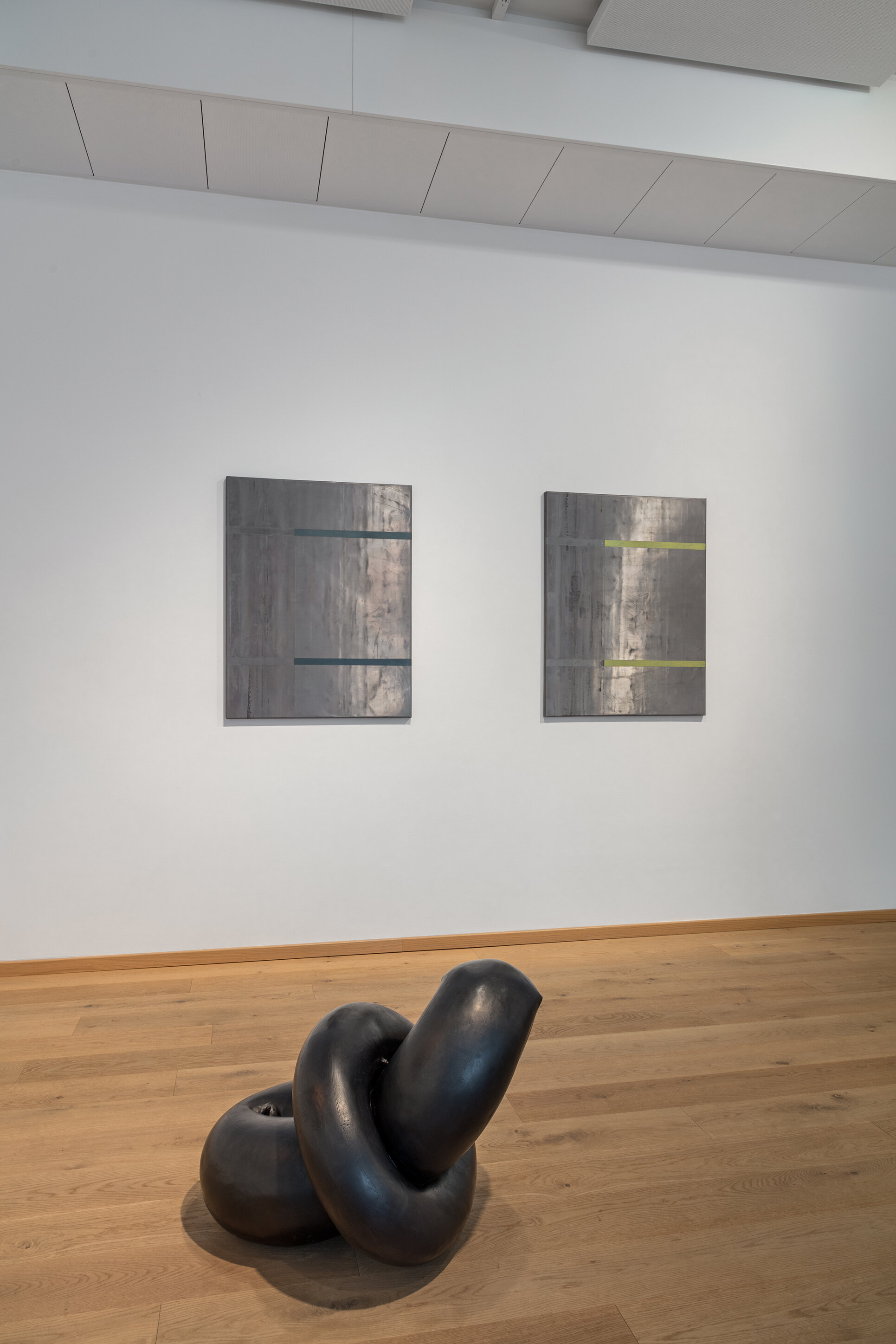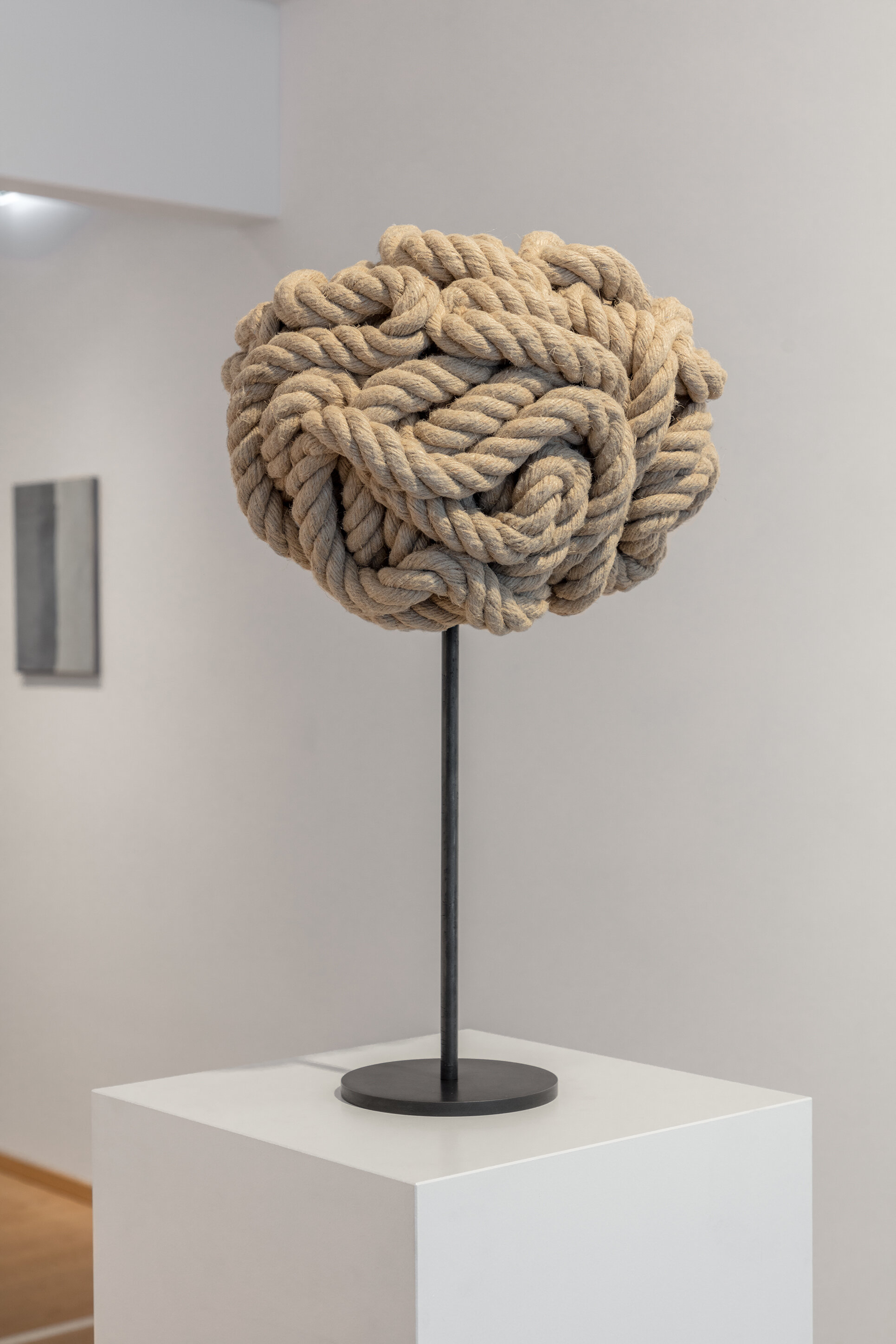Livie Fine Art: Sincerity as a strategic decision
An interview by Luz Hitters
Photography by Juan Hitters
August 2021
There are hundreds, if not thousands, of books explaining to curators and aspiring gallerists how to launch their business. Most such publications outline the gradual stepping stones of gallery management, presenting a digested strategy that has the objective of fitting all art business models. They define Leo Castelli's infamous operational plan as a suitable starting point, including special mentions of the rise of the mega-gallery, and the boom of 'must-attend' art fairs. However, any person who has mild closeness to the art world can affirm that these theoretical guidelines tend not to apply in reality. Each gallery has its own audience, preferences for artists and, in some way or another, a particular soul. These personal aspects and approaches are determinants of a gallery's success. However, they are not usually highlighted as they stem from a mixture of gut feeling, passion and admirable flexibility.
For this same reason, I am always thrilled when I discover a gallery that not only generates exceptionally researched catalogues and innovatively curated exhibitions, but also manages to safeguard their represented artist's interests. Even more so if they achieve this while reaching a broad and inclusive audience, engaging both art lovers and impassioned beginners. Such is the case of Zurich-based art gallery Livie Fine Art, co-directed by the young and enthusiastic couple: Marie Christine and Caspar Livie.
My visit to their gallery took place at the same time as an artist I love, Michael Sailstorfer, was on show. I was delighted to be welcomed by both Marie and Caspar, who work with a wide range of artists, always seeking to shed new light on past and present oeuvres. The two co-directors proved to be highly generous about their contemporary art knowledge and cultural industry expertise. I had the privilege of interviewing them that same afternoon.
Luz: In what ways would you say your strategy as a gallery has changed over the past year with regards to your market approach and curatorial aims?
Marie: It has changed quite a lot because we started out two years ago focused much more on the secondary market. Our first show was a group show with Imi Knoebel, Katharina Grosse and Günther Förg, three very well-established artists. In the last year and a half, we moved much more to working with artists directly, leaving them a lot of freedom in creating shows and focusing on collectors closer to the gallery.
Caspar: The business model has changed a lot for us since the start of the pandemic. Of course, we are still active art dealers in the secondary market. But the pandemic has made us engage much more with the local art scene and has given us an opportunity to work with artists more directly. That's the silver lining in this whole period: thinking more about what kind of programming you want to do instead of what type of art deals. I'm pleased with the way it turned out.
L: That is incredibly interesting and makes the job more dynamic and ludic. And do you have specific criteria and objectives for your selection process? Is your choice of representation based on specific requirements, an institutional framework of eligibility, or prompted by idiosyncratic interests?
M: It also comes from our history of first being collectors, then art dealers and now gallerists. Also, our heritage. Caspar comes from Munich and his father is American, and I come from Vienna, have lived in Paris and worked in Buenos Aires, so we have close relationships with artists from that region.
C: In the end, it's an ever-evolving thing, a matrix between what you admire and whom you can work with. That somehow dictates the programme. One of the rewarding things to be having spent more time here, as opposed to travelling, was also to discover more of the work of artists based in Switzerland.
M: On the other hand, we're also exhibiting artists that haven't been shown in Switzerland or Zurich before. It is really interesting to see our collectors' positive reactions to our program.
L: How do you regard the functioning relationships forged and maintained between galleries active on the Zurich art scene?
M: We are happy to have been well received as a new gallery in Zurich by other gallerists, and are in constant exchange with many colleagues. There are well established initiatives like the Zurich Art Weekend, a collaborative effort in bringing collectors here especially for the weekend before Art Basel, and organising events together. We also coordinate with other galleries when to do openings, logistics etc.
C: Being a tiny player in this business, it is of vital importance that we maintain good relationships with other people. Besides our colleagues in Zurich, we also have close contacts with gallery colleagues internationally.
M: This is also vital for artists that we are showcasing; to be able to give them better access to different markets. I think this close network also allows to provide them with the best possible opportunities.
L: Yes, an international network maximises artistic exposure and enriches the art world. We can learn so much from these cultural exchanges.
On the other hand, what makes a gallery successful? Which major key points would you highlight, and which possible pitfalls should one be extra wary of?
C: Regarding the key points, I would say good art and loyal customers. It ultimately boils down to sincerity; towards the artists, the art you sell, and the clients you engage with. You must breathe and feel the stuff that you're promoting and showing. People realise very quickly if you have doubts about what you're doing. Therefore, you can only represent what you believe in yourself. We aim for very long-term relationships with our clients, helping them build collections and stay in dialogue.
M: Ideally, it should offer our collectors an additional inspiring aspect to their life. Many of our collectors have very serious jobs, in which they are hard working and focused during the day. Our gallery should give them the opportunity to be in contact with artworks and artists.
C: We try to focus our spending on artworks or artistic production, aiming to facilitate projects. When starting your own gallery, there's a huge temptation to make oneself bigger than one is and to spend a lot on the set-up.
M: Especially today with all the big galleries around. As a smaller gallery, you must be smart about where to spend your money.
C: And back to this idea of sincerity. Serious collectors will realise that you're doing serious things even on a smaller budget.
M: When collectors or visitors come in, they will always speak to one of the two of us. That goes back to the idea of having a dialogue. It's a very direct conversation.
L: I agree. When you meet the directors, you have a better insight into the artworks, the artistic practice, and its relevance. It becomes more accessible, more engaging. I would say even stimulating. And from what you say, this personal relationship is a gallery's main asset.
C: That's the beauty of buying art in a smaller gallery environment: the direct interaction. Most of the time, if you come to the opening, you'll speak to the artist. If you stay a little bit longer, you'll probably get to have a few drinks with the artist, curators, collectors. That's an immediacy that you only get at smaller galleries.
L: Talking about openings, could you tell me more about any of your upcoming projects?
M: We have some great shows planned. Right now we are preparing an exhibition with Olaf Metzel, who is very well known in Germany and internationally but hasn't had a gallery show in Switzerland yet. We will visit Olaf at his studio at the beginning of August to choose the works and plan.
And then we are really excited about our first solo show with Esther Mathis, a Zurich based artist. She will be showing earlier photographic works together with new installations. But I don’t want to tell too much, you really have to see the works yourself, they are very special.
L: Do you tend to plan exhibitions much in advance?
M: That is coming back to your first question of how things have changed. I think planning is not as much possible as before. This also opens great opportunities and more spontaneous decisions. We showed, for example, Austin Eddy, a New York-based artist. It was not planned very much in advance, and it turned out to be a fantastic show.
I think we're also lucky. If you work in a certain way, people understand and come towards you. There are certainly also galleries whose clients are more focused on art as an economic investment. Our clients are people who love the artworks. We have fascinating and passionate collectors.
C: It's a very intuitive business. You must have a certain element of business savvy to do this, but the unpredictability is enormous. The most important thing is to be open for opportunities and open for change, especially in the early phases of this business. That is a lesson learned from Argentina where Marie was part of the Art Basel Cities initiative in Buenos Aires. She coordinated this great undertaking with large artistic production, VIPs coming in globally, artists, curators and city officials in an environment where the Argentinian pesos lost a lot of its value. And as Marie told me, in a crisis, you live day to day. You get up in the morning, assess the situation and see what you can do.
L: lt must be great to collaborate with one another during these unprecedented challenges, brainstorm and find creative ways of approaching solutions.
C: Yes. When COVID happened and lockdowns began, I was freaking out because all the things we've planned on went out the window. Marie said, 'Let's see what we can do, see what's in front of us. Each morning, we do our thing, and then we go home, go to bed and start over.' Somehow, that's the only way to get through a crisis because the situation will be different every day. And you have to generate enough energy to reassess constantly.
L: That is so wise. I never thought about the effort you make every day to recalculate. It can be draining, but also it gives room for so many other options you never thought about.
M: Certainly, that was very interesting. I remember that in Argentina, many people told me that they were keen to learn from Art Basel. In the end, it was really a learning process on both sides. I was amazed by the creativity and energy, and how quickly you can make things happen if you are more flexible.
L: I absolutely agree! I think both sides have a lot to learn from one another. It is essential that we lower art market barriers and create this melting pot of knowledge and experiences exchange.














